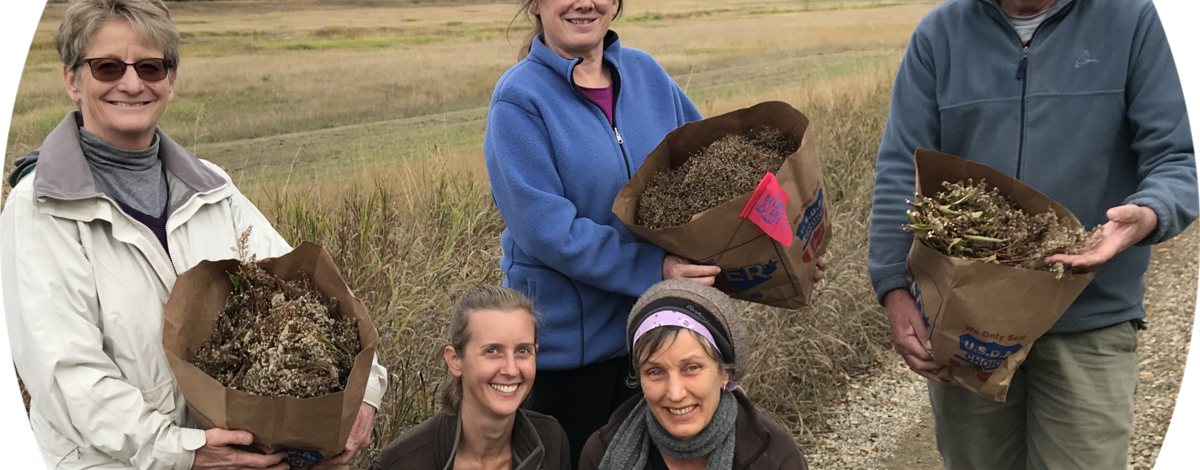We all love wildflowers! They trumpet in the summer with bright blues and yellows and reds, and vibrate with life as bees, butterflies, moths, flies, and beetles collect their nectar and pollen. But we often forget about the amazing cycle of life that continues after the blooms fade. Seed collection is an opportunity to connect with the world through a different kind of beauty, quiet and unadorned. It offers another reason to walk or bike or paddle, to get out for the day or just for an hour, to share time with friends or in solitary contemplation, to look closely at things that might otherwise get a passing glance, and to learn new things about the ancient practices of plants and people.
It is also a way to help IDFG restore an abundance of food to our native pollinators, including bumblebees. You can volunteer for IDFG this spring, summer, and fall to help identify wildflowers and collect their seeds, which will be used in the restoration of 250 acres of lowland forest and wetland on the Boundary-Smith Creek Wildlife Management Area (WMA). This WMA happens to be at the center of where two particular bumblebees are found in North America - the Western Bumblebee (Bombus occidentalis) and the Suckey's Cuckoo Bumblebee (Bombus suckleyi). Once quite common, there is now evidence suggesting their populations are declining. But restoring an abundance and wide variety of wildflowers for bumblebee foraging can help their populations rebound.
Check out our Wildflower Seed Collection Manual for more details about this fun and flexible way to get outside, gain some skills, and give back to our local pollinators!
Please contact our Citizen Science Coordinator at kristina.boyd@idfg.idaho.gov to learn more about the many ways you can volunteer.

